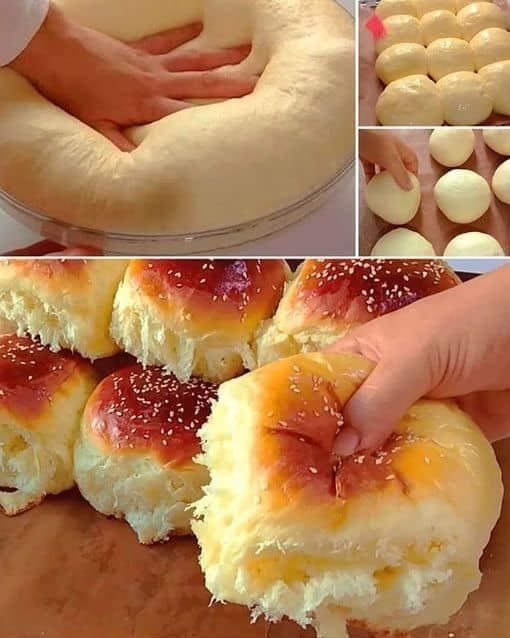Start with the sponge: Place the milk, yeast, egg, and 1 cup of flour in the bowl of a stand mixer. Mix the ingredients with a spatula until combined (it will be very sticky).
Sprinkle the remaining cup of flour on top, covering the sponge completely, and let it rest in a warm place for 30 minutes (no need to cover the bowl with plastic wrap).
After 30 minutes, check that there are cracks in the flour (see blog photo). The cracks let you know that the yeast are alive and well.
Continue with the dough: Add the sugar, salt, eggs, and 1 cup of the flour to the sponge. Fit the bowl on your stand mixer, and using the dough hook, mix on low for 1 minute, until the dough starts to come together. With the mixer still running on low, add the remaining 1/2 cup of flour.
When the flour has been incorporated, increase the speed to medium, and mix for 15 minutes. After 10 minutes have passed, if the dough seems too loose, add 3 additional tablespoons of flour, to help the dough form into a cohesive piece. Make sure you don’t skimp on kneading the dough for 15 minutes.
Turn the mixer down to medium low speed and add the butter, a couple pats at a time, waiting until each installment of butter is absorbed before adding the next. When all the butter has been added, bump the speed up to medium high for a minute, then reduce to medium and knead the dough for 5 minutes. The dough will be soft and slightly sticky.
Cover the bowl tightly with plastic wrap, and let it rise at room temperature for 2 hours, until it has doubled in size.
Using a spatula, gently turn the dough upside down and compact it back to its original volume (we are redistributing the yeast, but take care not to “bash down” the dough too much).
Cover the bowl again with plastic wrap and let it rise in the refrigerator overnight, or for at least 8 hours.
With a sharp knife, gently slice your dough into 3 sections. Cut each section into 6 pieces. You may gently roll those pieces into balls, but you can also leave them sort of square.
Get three standard loaf pans***. If using nonstick bakeware, you can skip greasing, but if using uncoated bakeware, I recommend greasing with butter. Place 6 balls each into each pan, then cover with plastic wrap. Let rise for 2 hours.
When you are ready to bake, preheat the oven to 375F. Brush the tops of the loaves with egg wash, if desired.****
Bake the loaves for about 30 minutes, until the interior measures 190F using an instant read thermometer. If during the baking process your brioche browns too much, loosely cover the loaves with aluminum foil. Sometimes moving the brioche down a rack in the oven is sufficient to prevent overbrowning as well.
For superior texture and to prevent gumminess inside the loaf, let cool on a wire rack at room temperature for at least 20 minutes. However, you may find that you cannot resist eating some of the brioche warm out of the oven, and that’s okay too. Let the loaves cool completely before storing, and enjoy!

MILK BRIOCHE – Best Fluffy like cloud and super soft
𝐀𝐝𝐯𝐞𝐫𝐭𝐢sement
𝐀𝐝𝐯𝐞𝐫𝐭𝐢sement
Pages: 1 2
